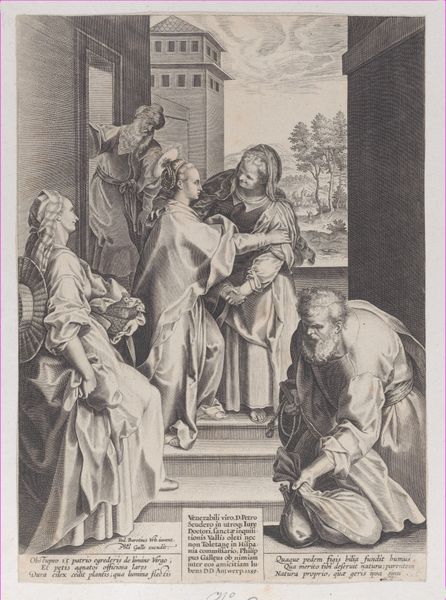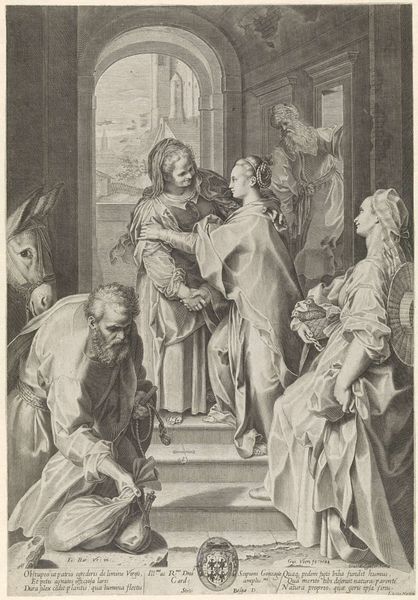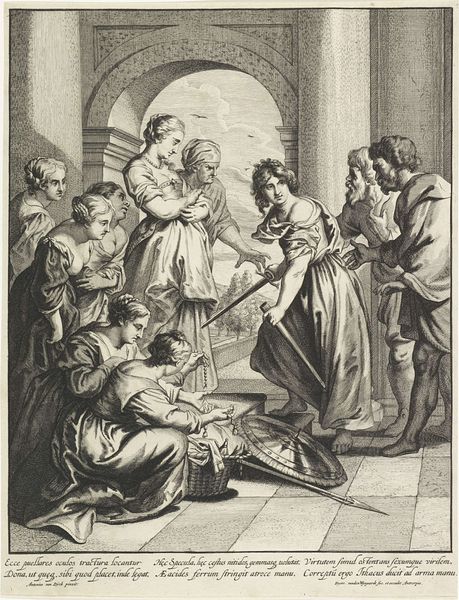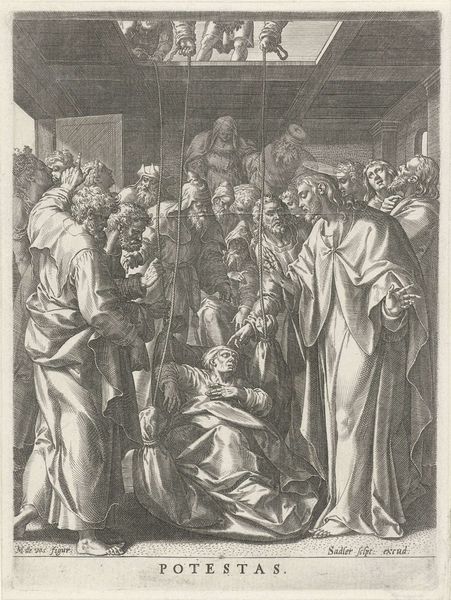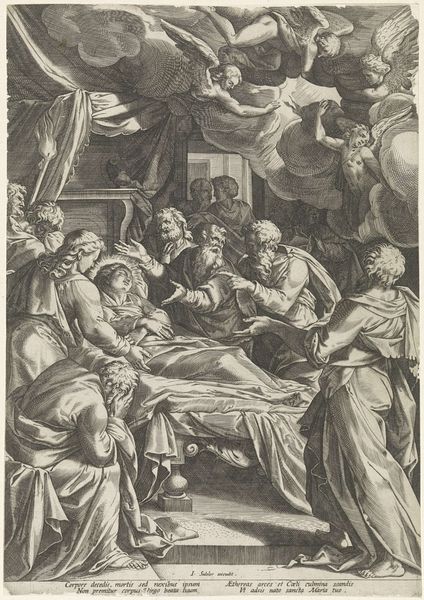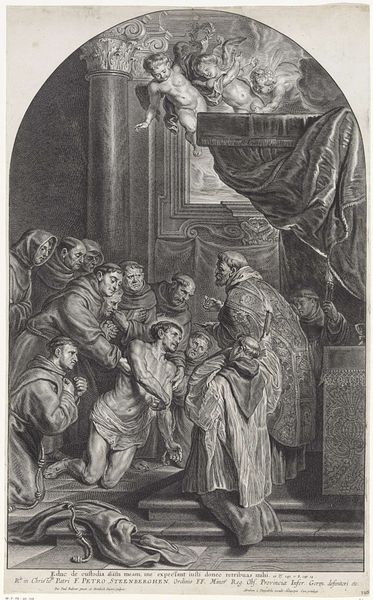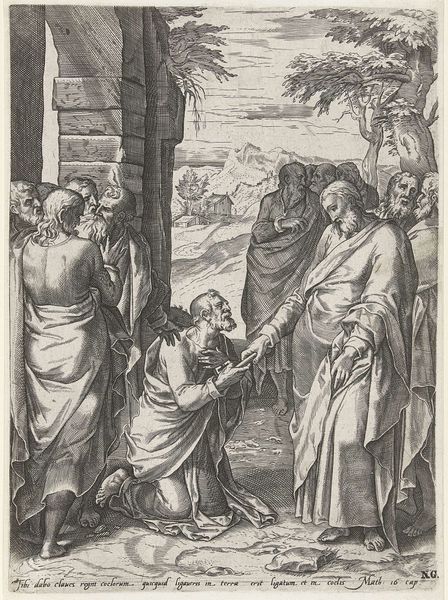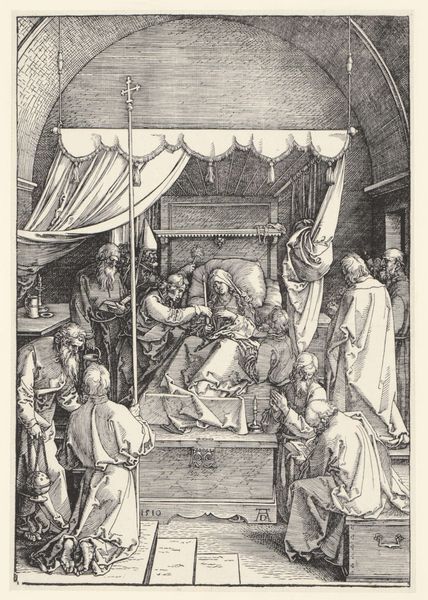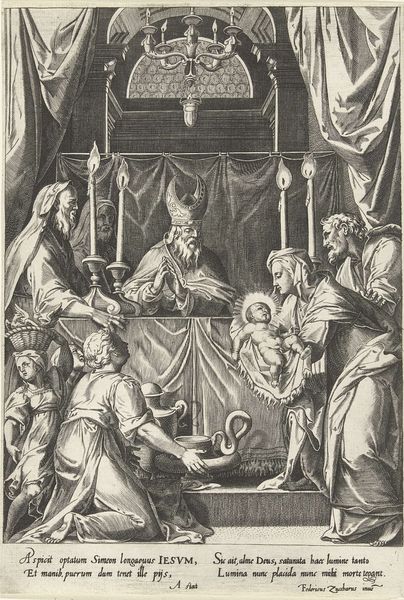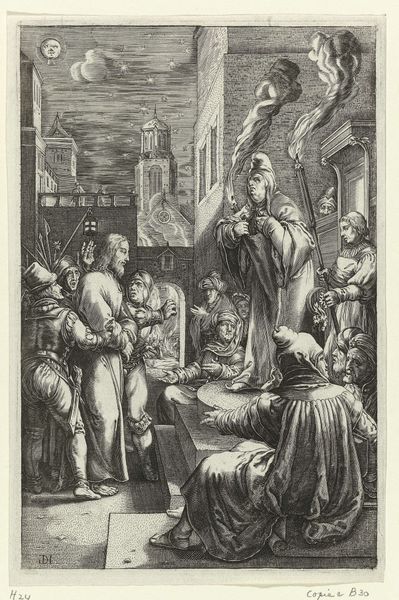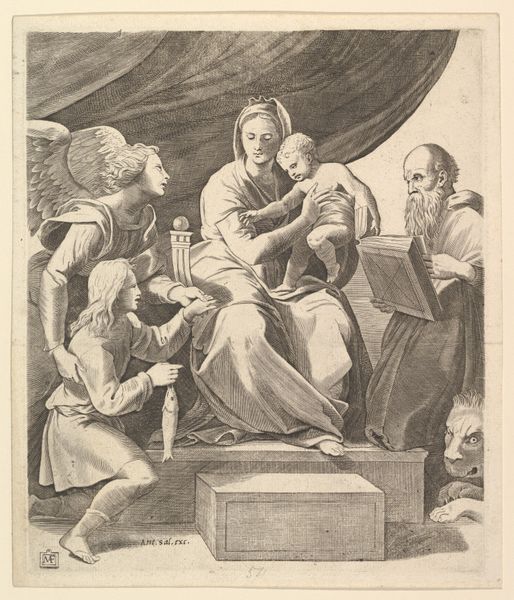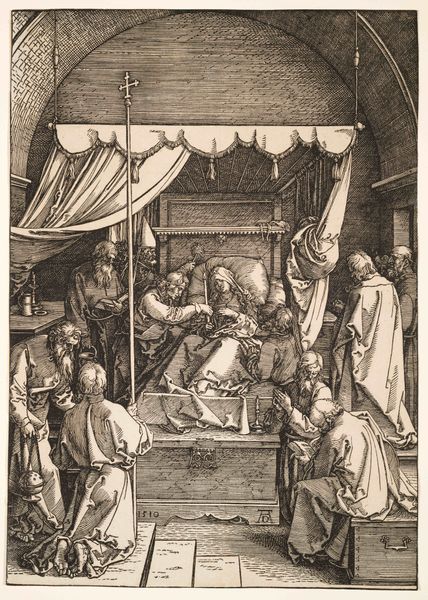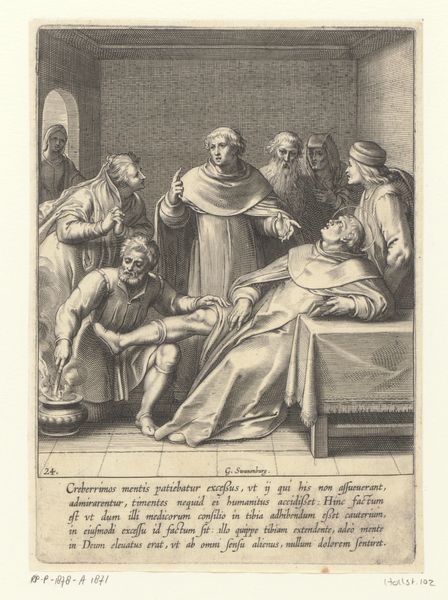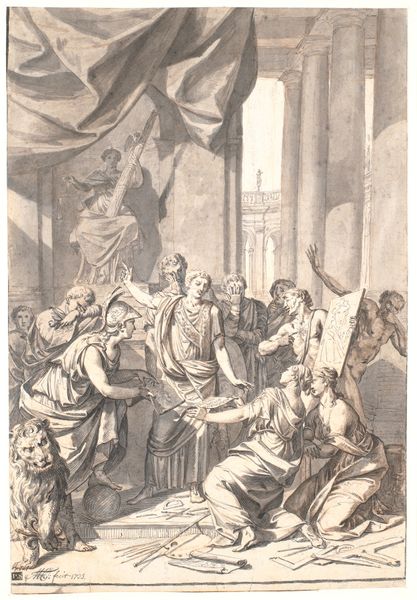
print, engraving
#
narrative-art
# print
#
figuration
#
italian-renaissance
#
engraving
Dimensions: height 517 mm, width 378 mm
Copyright: Rijks Museum: Open Domain
Curator: Looking at "The Raising of the Daughter of Jairus," made sometime between 1525 and 1565 by Nicolas Beatrizet, currently housed in the Rijksmuseum. What's your immediate reaction? Editor: A hush. The figures seem suspended in a moment between life and death. I am struck by how much empty space the engraver included and how effective that negative space is in conveying stillness, death and then a resurgence of life. Curator: That resonates with the function of this print, I think. Prints during this time had significant didactic purposes. Disseminating religious narratives like this one, from the Gospel of Mark, was very important for religious institutions, offering affordable imagery. We also need to think about the workshops involved in this dissemination. Editor: Of course, it wasn’t just about churning them out. Look at the labor here; Beatrizet has carefully employed engraving to mimic the textures of fabrics, skin, even the varying qualities of light falling across the room. He masterfully crafts visual experience from what are, essentially, a series of very deliberate marks and spaces. Curator: Precisely. And this imagery has to function within a complex social landscape, as we consider the role of patrons. Prints often helped shape cultural perceptions. Beatrizet wasn’s creating images in a vacuum, nor was he free of biases within society. Who, after all, was expected to own it? How did his audience influence his choice of this scene over other stories? Editor: And that is quite significant when examining depictions of women at the time. This girl's life, returned, is presented as a miracle for others, reaffirming faith in male authority figures. In this way, a print like this does ideological work; we are subtly asked what it means to return her to her place, essentially silencing any individuality of hers within the larger community or her family’s community standing.. Curator: Excellent point! Beatrizet is definitely channeling broader political currents via art. When viewing this print, we shouldn't underestimate the impact and lasting echoes, not only of what is pictured, but also of the material that produced it. Editor: Agreed. Looking at this engraving today, it really underscores how intertwined the artistic process, faith, gender politics and labor truly are. Curator: It certainly prompts reflections on how our reception is framed historically!
Comments
No comments
Be the first to comment and join the conversation on the ultimate creative platform.
